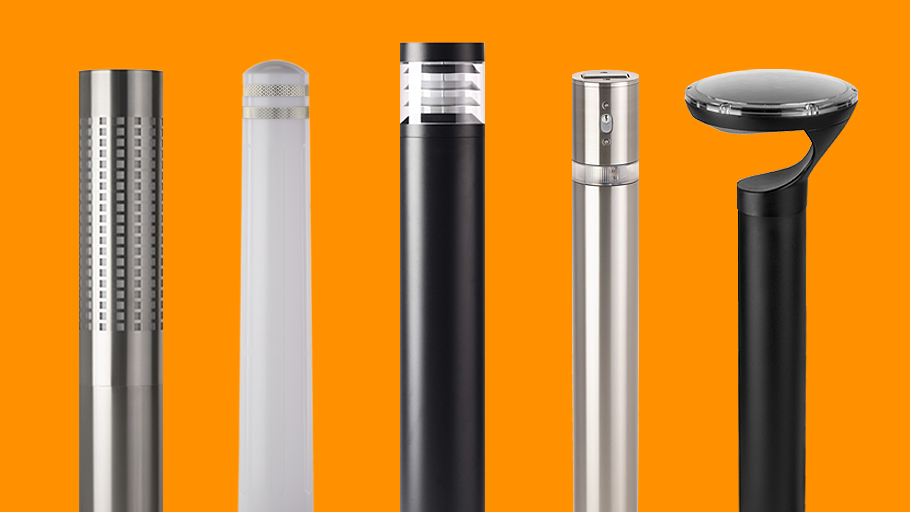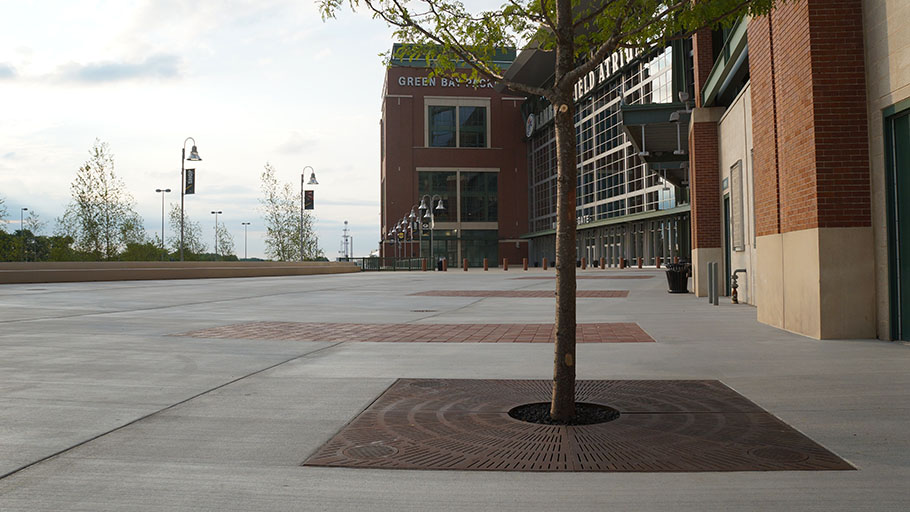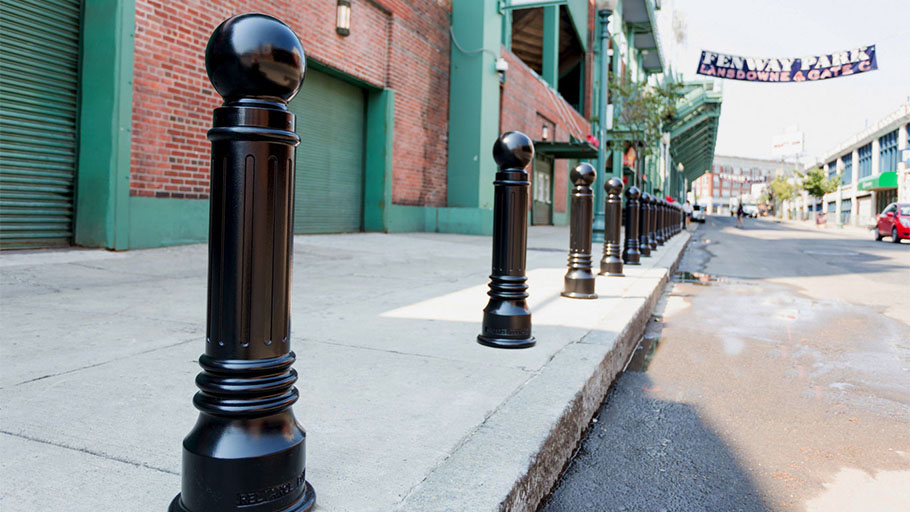Cost-effective, durable bike path delineators
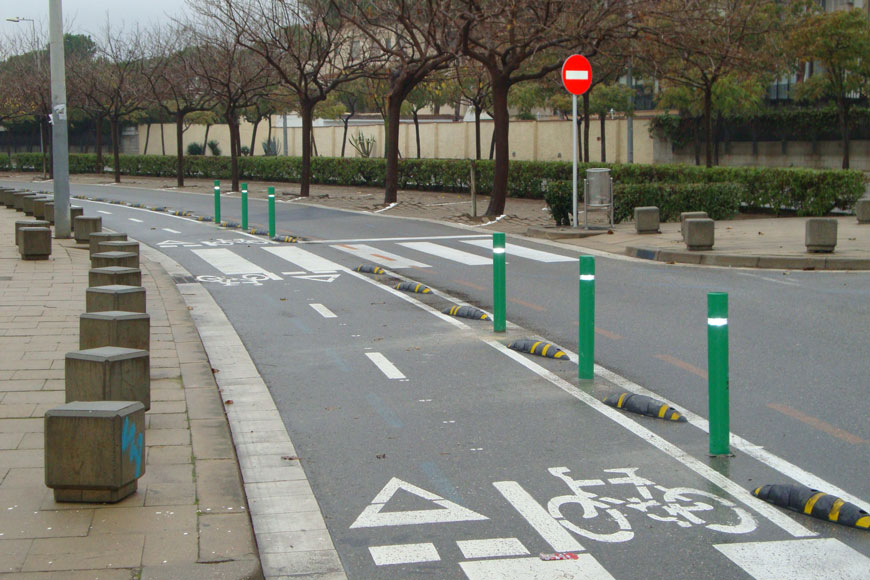
110 years ago, Ford introduced the Model-T and started a transportation revolution. The power and flexibility of movement provided by vehicles changed the design of cities. Yet cars are not universally efficient—their infrastructure is expensive to build and maintain, congestion and sprawl are common, streets are less sociable, and environmental costs are high. Recognizing these factors, many cities and regions are encouraging people to get out of their cars and re-engage with pedestrian, transit, and cycling spaces. Infrastructure must adapt in response so that these traffic changes don’t lead to conflict. Environmental design can help manage these multi-modal challenges—but this design needs to be cost effective, robust, and not cause more problems down the line. For example, painted bike and bus lanes—sometimes separated with flimsy polyethylene flex posts—can become a source of greater conflict when their marked use is ignored.
Separated bike lanes are better for cyclists
A study in the Journal of Urban, Planning, and Transport Research shows that cyclists prefer separated bike lanes, with 74% of active and 77% of non-active cyclists citing “continuous bike lanes / trails” as the top factor in deciding to ride. The study also shows that the comfort and security of these lanes or trails is important. Feeling unsafe in traffic is a major deterrent against cycling, and riders using dedicated bike lanes felt 2.62 times safer than those who shared the road with cars.

Even when the roadway is well marked, cars sometimes veer into bike lanes. Dedicated bike lanes are often on the shoulder. By force of habit, motorists use them as parking lanes. Even more dangerously, cars may veer into them for pedestrian pick-up or drop-off. If a bike lane is only marked with paint on the ground, motorists may not notice the separation, especially in the dark or in bad weather.
Shop tough but flexible bike lane separators
For these reasons, riders often prefer when bike lane delineators are installed. Bollards, curbs, planters, and barriers are all common. Around the world, cyclist groups have staged “human buffered bike lanes” to encourage their cities to install physical delimiters protecting their space. These human bollards prevent incursion into the bike line while they’re there, and demonstrate how traffic can flow in a shared roadway. In Boston, the tragic fatality of a cyclist struck by a truck entering the bike-path inspired one citizen to set up traffic cones and flower pots as a visual guide for vehicles and to encourage his city to make a traffic management change.
Even bus drivers who use dedicated bus lanes find vehicle traffic to be one of the major challenges to their days. Bus drivers also advocate for separated bus lanes.
Lane delineators and vehicle access
Unlike paint on the ground, lane delineators are hard to ignore even in poor lighting or bad weather. They generally prevent parking, driving, or drop off within a bike lane, as drivers understand the barriers as instructions not to pass.
City planners are often concerned with traffic flow in both regular and atypical situations. In most situations, traffic lanes are designed to provide adequate space for regular vehicles. However, when planning road networks, there can be groups or situations that require extra space to maneuver, like emergency vehicles. For these groups, hard barriers like curbs or planters may make routes impassable.
Many jurisdictions have tried to solve the problem with polyethylene plastic bollards. These flexible bollards can be passed over by emergency vehicles without doing damage to the vehicle. A hard barrier might cause damage, creating an accident stop and traffic congestion, where a flexible lane delineator lets the vehicle pass without casualty.
The plastic bollards are often not so lucky.
Weren’t these bike lane bollards installed outside the ferry terminal about a week ago? Two gone, the rest fairly dinged up. pic.twitter.com/daqEXQglY9
— Vincent Barone (@vinbarone) December 26, 2017
Designing a tougher flex post
The problem with common types of plastic bollards is that they do not have a lot of rebound. Many fixed base bollards withstand a limited number of hits before they crack and fall over. Those on base-spring systems can be torn from the base. When a plastic flex post goes down, it ceases to be a visual guide to traffic. Suddenly, motor vehicles again mistake or ignore paint markings for bike lanes. This failure creates a traffic pattern change, which increases accident risk.
Cyclists are often frustrated to watch bike lane flex posts go down. This visual round-up of bike delimiters from Oakland, CA shows plastic bollards destroyed in regular use. The author documents how unnerving it is for cyclists when bollards placed for protection are demolished on the job.
Although this type of plastic bollard seems inexpensive, it carries the continual cost of monitoring and regular replacement. A low upfront cost hides the expense of ongoing substitution, and the challenges of a street where, functionally, traffic patterns keep changing.
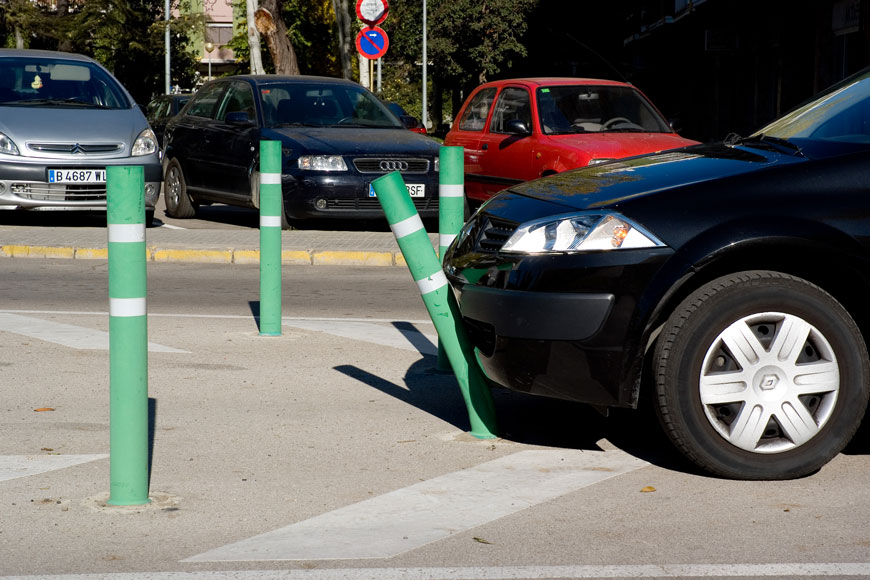
Flex posts made of polyurethane plastic are an alternative that is gaining popularity in European cycling centers. These bollards are flexible throughout the body, rather than sitting on a spring or hinge, and so do not have the same points of vulnerability. Shaped like a thicker, more traditional bollard, they provide a solid visual guide to mark a lane. Drivers do not casually hit them, as they look like they might be weighty enough to do damage.
However, these bollards bend out of the way, able to repeatedly deform by 90° and still return upright. The polyurethane material has more elasticity and greater thermal resistance than traditional polyethylene plastic bollards. When emergency vehicles need to pass over them, they can do so without interference.
Like all plastics, the color of polyurethane is consistent throughout the material, which means that the wear that comes from being hit or run over does not mar the look of the bollard. A variety of color and reflective tape options make these bollards customizable to any location.
Traffic safety for all modes of transportation
Flex posts made of polyurethane are rugged and cost-effective traffic management tools for cyclists and drivers alike. They provide a clear visual guide with their strong profile, so cars instinctively avoid them, and yet they do not damage cars that hit them. They bend out of the way for emergency vehicles. Unlike flexible bollards made of polyethylene, these delineator posts don’t easily get flattened or ripped free, minimizing replacement time and cost. European cities are increasingly using them as the solution for traffic management, to great success. In North America, they are an innovative alternative for transportation planners growing frustrated with the options available for separated lanes.

